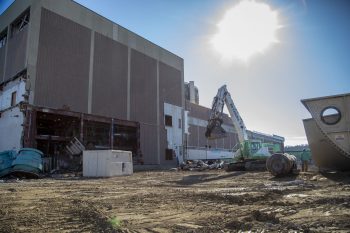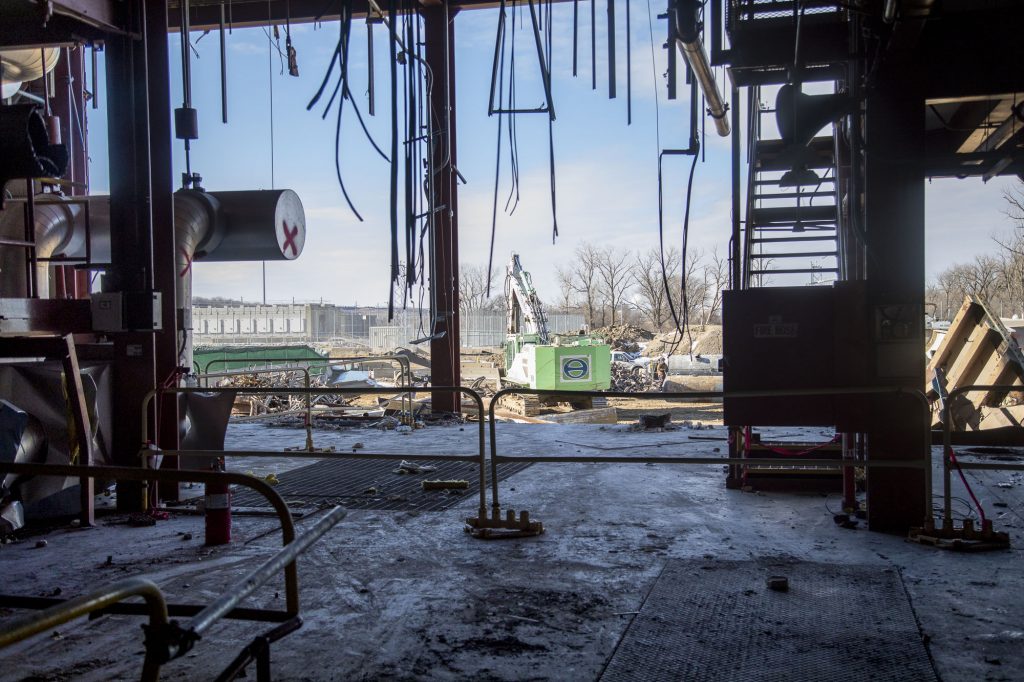Work continues at Fort Calhoun Station

Work on the decommissioning of OPPD’s Fort Calhoun Station (FCS) continues, with several markers ahead.
The station has been undergoing DECON – both decontamination and deconstruction – since 2016. That’s when OPPD decided to cease operations because of economic necessity and significant shifts in the energy industry. The station is expected to be returned to greenfield status around 2026; that status means virtually no trace of the plant will remain.

In May 2020, the last canister of spent nuclear fuel was moved to its dry cask storage on the site until the federal government fulfills its obligation to transport the fuel to an interim or permanent disposal site.
Until that happens, the dry cask storage facility remains guarded and monitored around the clock. Ongoing inspections and sampling will ensure everything remains in regulatory compliance.
Ongoing work at Fort Calhoun
One of the biggest current projects at FCS is the reactor vessel internal segmentation work. That entails removing the internal components out of the reactor vessel, the parts that helped the reactor produce nuclear power, said Craig Longua, assistant plant manager at FCS.
Those internal components remain under about 30 feet of water, where workers are taking them apart with underwater rotating saws. This keeps all particles under water and out of the air. A vacuum and filtration system catches those particles for disposal. Once pieces are cut up, they are put into containers then removed from the pool and dried for shipment after being surveyed to make sure they meet Department of Transportation regulations.

It takes hundreds of saw blades to complete this work, Longua said, as reactors are incredibly strong and dependable. That work should finish up in November, he said.
Moving materials
To be able to move materials out of containment then transport them off-site, a structure was raised and a rail and gantry crane system was designed to move the canisters. It consists of a flat bed with a gantry to take the components from a vertical position into a horizontal position to make them easier to ship.
Workers tested the system Jan. 28, loading the first canister of materials and preparing it for shipping.
The plan is to use this system for the next two-and-a-half years, Longua said. After cutting up the reactor’s internal components, workers will dismantle the reactor vessel itself and ship it out. The process of dismantling the reactor will take another year, he said.
Once that work is done, the large components in the containment building – including the steam generators, the pressurizer and the piping – along with everything else will be taken down and removed.
The final step will be taking down the containment building. After that, survey work and soil testing will take place, then workers will backfill the area with clean soil. The last step is for the Nuclear Regulatory Commission to do its surveys and release the site to greenfield status.


Jason Kuiper joined OPPD as a communications specialist in 2015. He is a former staff writer and reporter at the Omaha World-Herald, where he covered a wide range of topics but spent the majority of his career covering crime. He is a graduate of the University of Nebraska at Omaha and has also appeared in several true crime documentary shows. In his free time he enjoys cooking, spending time with his wife and three children, and reading crime novels.
View all posts by Jason Kuiper >







